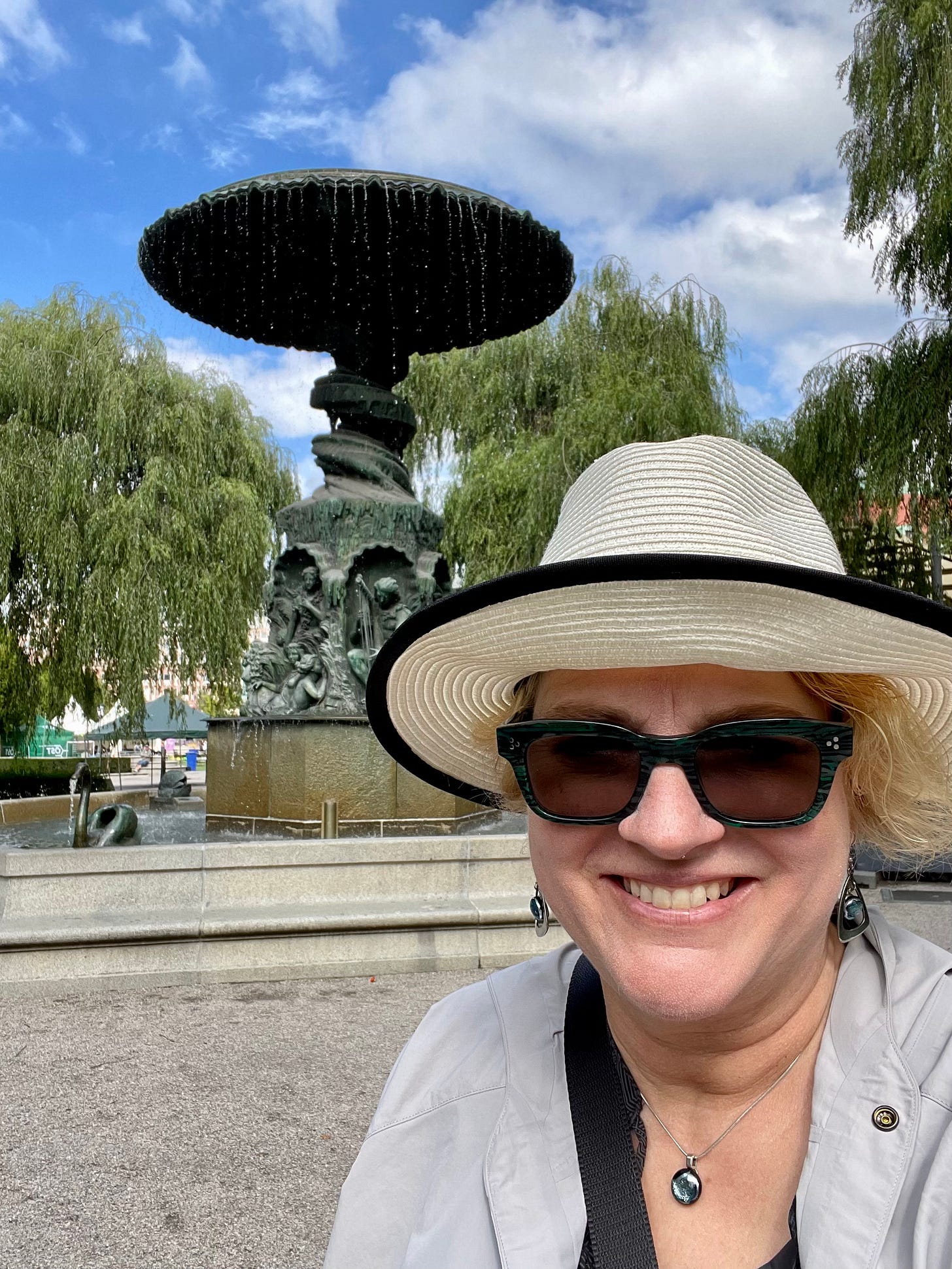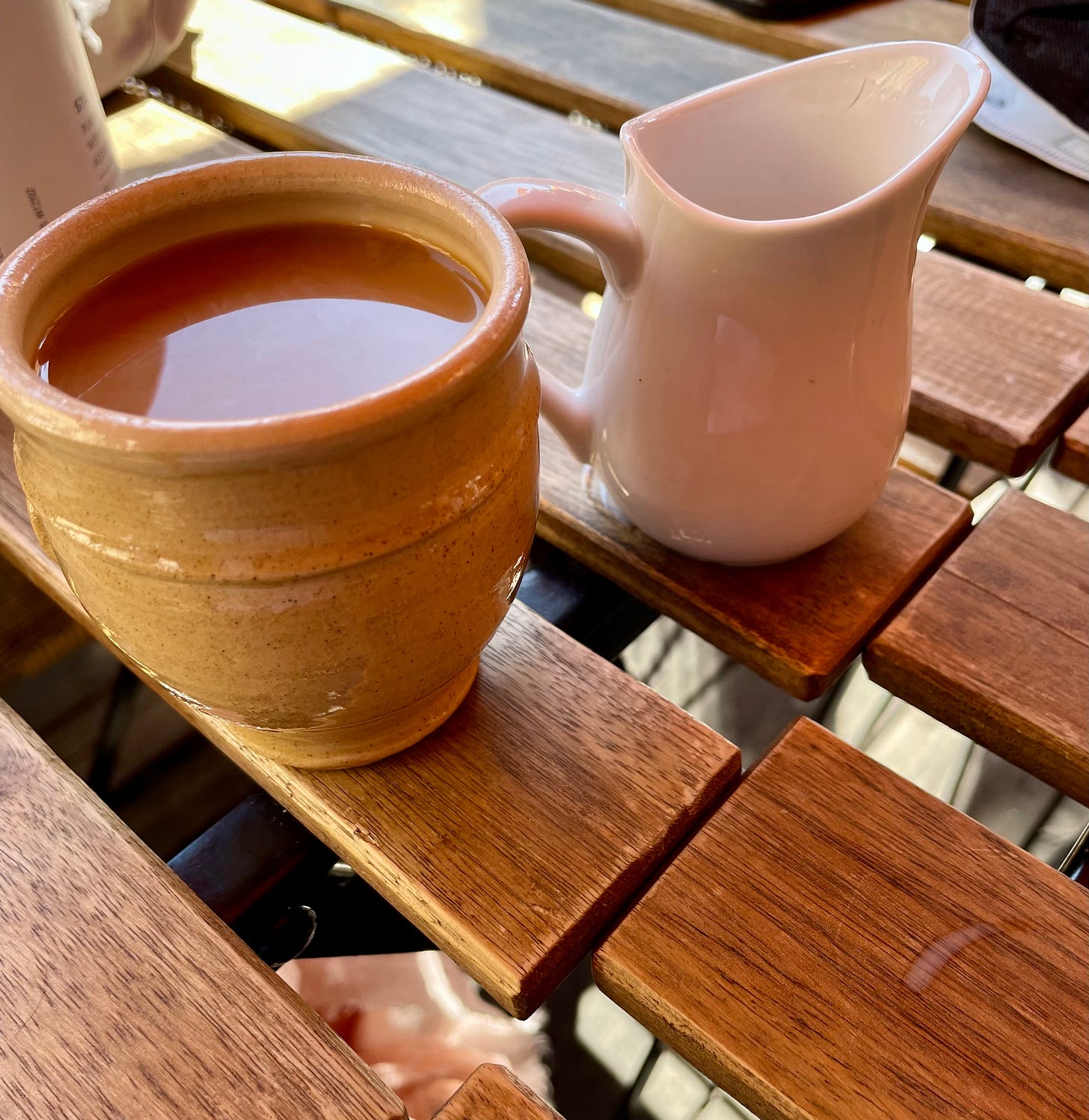Rest Is a Radical Act:
Reclaiming Your Worth After Brain Injury
I never really understood what it meant to take it easy. I enjoyed staying busy, reaching goals, and helping others. Even on vacation, I filled my days with new adventures and activities with family and friends.
At the time, I didn’t realize that I had been indoctrinated into believing that rest was not valuable and that my productivity defined my worthiness.
That all changed after the car crash.
Suddenly, everything came to a halt.
Eight years after my TBI, Stockholm, Sweden
After my brain injury, I developed neurofatigue. Unlike regular tiredness, neurofatigue can be triggered by even small efforts and doesn’t go away with rest. Each day, I woke up already tired and with only a little energy.
I realized I couldn’t just push through my fatigue after I fell asleep at the wheel on my way home from work. I realized I needed to conserve energy to ensure I could drive home safely.
Getting used to taking brain breaks during the day was tough. I often felt frustrated when I needed to stop and rest or take a nap. Sometimes, I felt like a little kid being told it was time for a nap.
You might also find it hard to rest or take breaks. Maybe you feel like you can’t stop because you’re behind on work, or you worry that coworkers or your manager will think you’re lazy. You may have grown accustomed to pushing through your tiredness, illness, or pain just to keep up.
Even if you want to take a break at work, it can be hard if there’s no break room. Some workplaces expect everyone to eat at their desks. For years, I took my breaks in my car.
At some of my old jobs, you could get fired for taking a nap or falling asleep during your break, even though research shows that naps help employees be more productive and make fewer mistakes. (1)
Molins Fountain, Stockholm, Sweden
You’ve probably heard the common grind culture sayings that Tricia Hersey lists in her book, Rest Is Resistance: “The early bird gets the worm,” “I will sleep when I am dead,” “If you don’t get up and get it every day, nothing will ever work for you,” “While y’all sleep, I grind,” “Burn the midnight oil to get things done,” “Team No Sleep,” “Rise and grind,” and “Pull yourself up by your bootstraps.” Tricia says, “All these toxic sayings and more are a part of the language of a culture determined to increase production and profit.” (2)
If you have a brain injury, these ideas can be hard to shake. Taking breaks can feel frustrating and even depressing, especially when you don’t have a choice.
As your brain heals, it’s important to start changing how you think about rest.
Rest is a basic right for everyone, including workers. Remember, you’re not a machine.
Rest helps you heal and supports your growth.
You deserve and are worthy of rest. Your value isn’t measured by how much you get done.
By putting rest first, you make healing and recovery your top priority. (3)
Having Fika (break) in Sweden. Workplaces in Sweden have fika as a regular daily schedule break, usually at 10 am and 3 pm.
Resting does not only mean sleeping. Rest can be achieved by staring out the window for a minute, allowing yourself to daydream, closing your eyes for a moment, practicing a 1-2 minute meditation, doodling, or taking a moment to sit outside.
Courtney Carver, in her book Gentle: Rest More, Stress Less, and Live the Life You Actually Want, says, “If you want to feel burned-out and uninspired all the time, keep doing the pushing-through thing. If you believe that some ease and joy would make your life better, perhaps this is worth a try.” She suggests easing through life instead of always pushing through. I’ve started to follow this idea myself. (3)
When you start to honor and embrace rest, you’ll see the value in slowing down, being intentional, and getting enough sleep. Taking breaks at work will feel more natural because you’re doing it for yourself and your healing brain. So join me. Be a rebel and rest.
Take care, get better, get stronger,
Kelly Tuttle
Brain-Loving Advocate
P.S. As a brain injury survivor, I understand the challenges of reintegration into the workforce. If you’re also a survivor looking to return to work, please visit my website for my online program: Return to Work and Life After a Brain Injury.
You can also find my book, After the Crash: How to Keep Your Job, Stay in School, and Live Life After a Brain Injury, and additional resources.
My book, After the Crash, is also on Audible.
My book, After the Crash: How to Keep Your Job, Stay in School, and Live Life After a Brain Injury, can be found on Amazon or at your favorite independent bookstore
I created a journal just for you! Check out My Brain Injury Recovery Journal
My eBook, Getting Back Behind the Wheel
Please check out my YouTube channel.
Resource:
Matthew Walker, “Why We Sleep: Unlocking the Power of Sleep and Dreams”, (New York, Simon &Schuster, 2017)
Tricia Hersey, “Rest is Resistance”, (New York, Little Brown Spark, 2022)
Courtney Carver, “Gentle: Rest More, Stress Less, and Live the Life You Actually Want,” (New York, Hachette Book Group, 2025)





